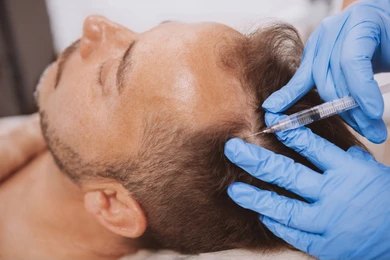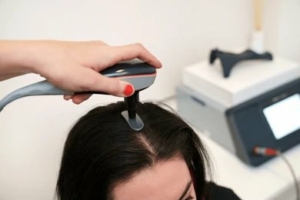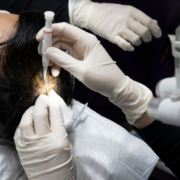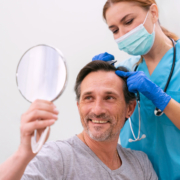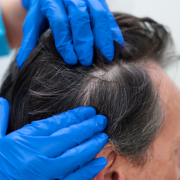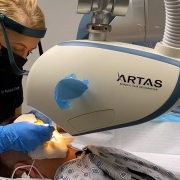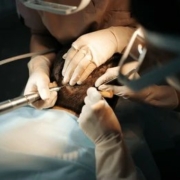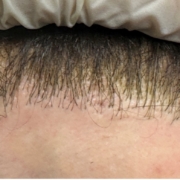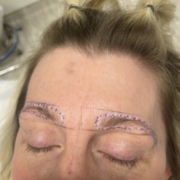Exploring the Best Non-Surgical Solutions for Hair Loss: Effective Treatments for Thinning Hair
Understanding Hair Loss: Common Causes and Symptoms
Hair loss is a prevalent issue affecting millions of people worldwide. While it’s commonly associated with aging, hair loss can result from various factors, including genetics, hormonal imbalances, medical conditions, and lifestyle choices. Understanding the causes and symptoms of hair loss is crucial in finding the most effective non-surgical hair loss treatment.
Common Causes of Hair Loss
- Genetics: Hereditary hair loss, known as androgenetic alopecia, is the most common cause of hair thinning and baldness in both men and women.
- Hormonal Changes: Conditions like pregnancy, menopause, and thyroid disorders can trigger hair loss due to hormonal fluctuations.
- Medical Conditions: Diseases such as alopecia areata, scalp infections, and lupus can lead to significant hair loss.
- Medications: Certain drugs used to treat cancer, arthritis, depression, heart problems, and high blood pressure may cause hair loss as a side effect.
- Stress and Lifestyle: Physical or emotional stress, poor diet, and inadequate hair care practices can contribute to hair thinning and loss.
Symptoms of Hair Loss
- Gradual thinning on top of the head
- Circular or patchy bald spots
- Sudden loosening of hair
- Full-body hair loss
- Patches of scaling that spread over the scalp
Understanding these causes and symptoms helps in identifying the appropriate non-surgical hair replacement near me to manage and reverse hair loss. At Hair For Life, we specialize in personalized hair restoration solutions tailored to meet individual needs.
The Importance of Early Intervention in Hair Loss Treatment
Early intervention is key to effectively managing hair loss and ensuring the best possible outcomes. Addressing hair loss in its initial stages can prevent further progression and increase the likelihood of successful non-surgical hair restoration.
Benefits of Early Intervention
- Prevents Further Hair Loss: Treating hair loss early can halt or slow down the progression, maintaining the existing hair.
- Enhances Treatment Effectiveness: Early treatment can improve the effectiveness of hair restoration therapies, leading to better results.
- Boosts Confidence: Addressing hair loss promptly can help individuals regain their confidence and self-esteem.
Recognizing Early Signs
- Noticeable thinning of hair, especially around the temples and crown
- Increased hair shedding, more than the usual 50-100 strands per day
- Visible scalp or widening part lines
- Gradual recession of the hairline
At Hair For Life, we emphasize the importance of early detection and treatment. Our team of experts is dedicated to providing comprehensive evaluations and personalized treatment plans to help clients achieve optimal results with non-surgical hair regrowth treatment.
Topical Treatments: Minoxidil and Other Effective Solutions
Topical treatments are popular non-surgical options for managing hair loss. These treatments are applied directly to the scalp and work by stimulating hair growth and slowing down hair loss. Among the various topical treatments available, Minoxidil is the most widely used and researched non-surgical hair transplant solution.
Minoxidil: The Gold Standard
- How It Works: Minoxidil is a vasodilator that widens blood vessels, improving blood flow to hair follicles. This increased blood flow stimulates hair follicles, promoting hair growth.
- Application: Minoxidil is available over-the-counter in two concentrations: 2% and 5%. It is applied to the scalp twice daily.
- Effectiveness: Clinical studies have shown that Minoxidil can slow hair loss and stimulate new hair growth in both men and women.
Other Topical Solutions
- Ketoconazole: An antifungal medication that can reduce scalp inflammation and potentially stimulate hair growth.
- Topical Finasteride: A combination of Finasteride and Minoxidil is available for enhanced results, although it requires a prescription.
- Herbal Remedies: Natural oils and extracts like rosemary oil, peppermint oil, and aloe vera have shown promise in improving scalp health and hair growth.
Benefits of Topical Treatments
- Non-invasive and easy-to-use
- Minimal side effects when used as directed
- Can be integrated into daily hair care routines
At Hair For Life, we offer a range of topical treatments tailored to individual needs, ensuring a customized approach to non-surgical hair restoration.
Oral Medications: Finasteride and Beyond
Oral medications are another effective non-surgical option for treating hair loss. These medications work from within the body to address the underlying causes of hair thinning and promote hair regrowth. Finasteride is the most commonly prescribed oral medication for non-surgical hair restoration procedures.
Finasteride: An Overview
- How It Works: Finasteride inhibits the enzyme 5-alpha reductase, which converts testosterone into dihydrotestosterone (DHT). DHT is a hormone linked to hair loss, and reducing its levels can slow down hair loss and stimulate regrowth.
- Dosage and Administration: Finasteride is taken once daily in pill form. It requires a prescription from a healthcare provider.
- Effectiveness: Clinical studies have shown that Finasteride can significantly reduce hair loss and promote regrowth in men.
Other Oral Medications
- Dutasteride: Similar to Finasteride but more potent, inhibiting both types of 5-alpha reductase enzymes. It is often prescribed off-label for hair loss.
- Spironolactone: Primarily used for hormonal acne, it can also help with hair loss in women by reducing androgen levels.
- Biotin Supplements: While not a medication, biotin (vitamin B7) supplements can support hair health and strength.
Benefits of Oral Medications
- Convenient and easy to take
- Effective in reducing hair loss and promoting regrowth
- Suitable for long-term use with medical supervision
At Hair For Life, our experts provide thorough consultations to determine the most suitable oral medications for each client, ensuring safe and effective non-surgical hair restoration plans.
Low-Level Laser Therapy: How It Works and Its Benefits
Low-Level Laser Therapy (LLLT) is a non-invasive hair restoration treatment that uses red light lasers to stimulate hair follicles and promote hair growth. This therapy is gaining popularity due to its effectiveness and ease of use.
How Low-Level Laser Therapy Works
- Mechanism: LLLT uses red light lasers to penetrate the scalp and stimulate hair follicles. The light energy is absorbed by the cells, increasing cellular activity and promoting hair growth.
- Procedure: LLLT can be administered through in-office treatments or at-home devices such as laser combs, caps, or helmets. Treatments are typically performed several times a week.
Benefits of Low-Level Laser Therapy
- Non-Invasive: LLLT is painless and non-invasive, making it an attractive option for those seeking non-surgical hair replacement near me.
- Minimal Side Effects: The therapy has minimal side effects, primarily limited to mild scalp irritation.
- Convenient: At-home devices allow for convenient and consistent treatments, enhancing effectiveness.
Effectiveness of LLLT
- Studies have shown that LLLT can increase hair density and thickness, particularly in individuals with androgenetic alopecia.
- It is often used in combination with other treatments like Minoxidil and Finasteride for enhanced results.
At Hair For Life, we offer advanced LLLT devices and in-office treatments to help clients achieve fuller, healthier hair. Our team will guide you through the process and ensure you receive the best care possible.
Platelet-Rich Plasma (PRP) Therapy: A Natural Approach to Hair Regrowth
Platelet-Rich Plasma (PRP) therapy is a cutting-edge treatment that uses the body’s own platelets to stimulate hair growth. This natural approach leverages the healing properties of platelets to rejuvenate hair follicles, making it a leading choice for non-surgical hair restoration procedures.
How PRP Therapy Works
- Process: PRP therapy involves drawing a small amount of the patient’s blood, processing it to concentrate the platelets, and injecting the platelet-rich plasma into the scalp.
- Mechanism: The growth factors in the platelets stimulate hair follicles, promoting new hair growth and improving hair thickness and density.
Benefits of PRP Therapy
- Natural and Safe: Since PRP uses the patient’s own blood, there is minimal risk of allergic reactions or side effects.
- Effective: Clinical studies have shown significant improvements in hair density and thickness following PRP therapy.
- Minimal Downtime: The procedure is quick and involves minimal downtime, allowing patients to resume normal activities shortly after treatment.
PRP Therapy at Hair For Life
- Our experienced team at Hair For Life is skilled in administering PRP therapy, ensuring a comfortable and effective treatment experience.
- We use state-of-the-art equipment to process and inject PRP, maximizing the benefits for our clients.
If you’re looking for a natural and effective solution for hair loss, PRP therapy at Hair For Life might be the perfect option for you.
Lifestyle and Dietary Changes: Supporting Hair Health from Within
Healthy hair starts from within. Lifestyle and dietary changes can play a crucial role in preventing hair loss and promoting hair growth. Incorporating the right nutrients and practices into your daily routine can significantly impact your hair health, supporting non-surgical hair loss treatments.
Key Nutrients for Hair Health
- Protein: Hair is primarily made of keratin, a protein. Including adequate protein in your diet supports hair growth and strength.
- Sources: Lean meats, fish, eggs, beans, and nuts
- Vitamins: Vitamins A, C, D, and E are essential for maintaining healthy hair.
- Sources: Fruits, vegetables, dairy products, and fortified cereals
- Biotin: This B-vitamin is crucial for hair growth and strength.
- Sources: Eggs, nuts, seeds, and leafy greens
- Iron: Iron deficiency can lead to hair loss. Ensure you have enough iron in your diet.
- Sources: Red meat, spinach, lentils, and fortified cereals
Lifestyle Practices for Hair Health
- Stress Management: High stress levels can contribute to hair loss. Practicing stress-relief techniques like yoga, meditation, and deep breathing can help.
- Proper Hair Care: Gentle handling of your hair, avoiding harsh chemicals, and regular scalp massages can promote hair health.
- Hydration: Staying hydrated is essential for overall health, including hair health. Aim to drink at least 8 glasses of water a day.
Tips for Healthy Hair
- Eat a balanced diet rich in vitamins and minerals.
- Avoid excessive heat styling and chemical treatments.
- Get regular exercise to improve blood circulation to the scalp.
- Maintain a healthy scalp by keeping it clean and moisturized.
At Hair For Life, we provide guidance on lifestyle and dietary changes to support your non-invasive hair restoration journey. Our holistic approach ensures that you achieve the best results possible.
Conclusion: Choosing the Right Non-Surgical Hair Loss Treatment for You
Choosing the right non-surgical hair loss treatment can be overwhelming, given the multitude of options available. However, understanding the different treatments and their benefits can help you make an informed decision.
Key Takeaways
- Early Intervention: Addressing hair loss early can significantly improve treatment outcomes.
- Topical and Oral Treatments: Options like Minoxidil and Finasteride are effective and widely used.
- Advanced Therapies: LLLT and PRP therapy offer innovative solutions with proven results.
- Holistic Approach: Lifestyle and dietary changes can support and enhance treatment efficacy.
At Hair For Life, we are committed to providing personalized non-surgical hair replacement solutions tailored to your unique needs. Our team of experts is here to guide you through every step of your hair restoration journey, ensuring you achieve the best possible results with non-surgical hair restoration procedures.
For more information or to schedule a consultation, visit Hair For Life today and take the first step towards restoring your hair and confidence with non-surgical hair regrowth treatment.
References:
Platelet-Rich Plasma (PRP) Injections | Johns Hopkins Medicine
Alma TED® | Alma Lasers (almainc.com)
Low Level Laser Light Therapy – American Hair Loss Association

